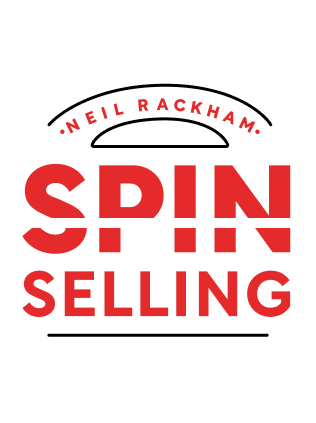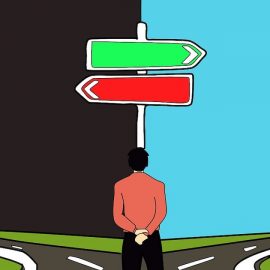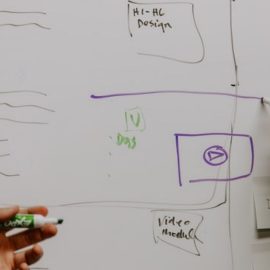

This article is an excerpt from the Shortform summary of "Spin Selling" by Neil Rackham. Shortform has the world's best summaries of books you should be reading.
Like this article? Sign up for a free trial here .
Can a buying signal tell you if the customer is ready to commit? What kind of buying signals in sales should you look out for?
Buying signals in sales can take a lot of forms. The SPIN selling method argues that customer buying signals are based on needs, and learning about customers’ needs can help you identify buying signals in sales. Read more below.
Buying Signals in Sales
As previously noted, in small sales, implied needs are reliable buying signals in sales (indications the customer wants to buy or advance the sale). The more often a customer agrees that he has a need/problem, the greater the probability of a sale.
But in large sales, explicit needs are the buying signals. In assessing whether a call has been successful, experienced sales reps want to see explicit needs, while less experienced reps may count implied needs as indicating success.
Needs development—making the customer’s problem so big that he has to act on it—is the critical selling skill in major sales.
Buying Signals and Customer Needs
Needs develop through a series of stages. Here’s how they evolve.
When you’re 100% satisfied with something—for instance, your laptop computer—you don’t feel a need for change. But when your satisfaction begins to erode, even to 99.9%, you have the beginning of a need.
When updating your software slows your computer down, you experience a glimmer of dissatisfaction that begins to grow. The limitations of your laptop start becoming apparent; in your mind, they develop into problems. You notice that the laptop loses its charge more quickly, and it definitely seems to be losing speed. But your belief that you have a problem doesn’t mean you’re ready to buy a replacement quite yet. Your problem has to evolve into a want and a drive to act. When you decide you want something—a faster, sleeker computer—you’re ready to buy. Since buying stages are different depending on needs, the buying signals in sales will also be different.
So the stages of need development are:
- The item you have is no longer 100% perfect.
- You feel a hint of dissatisfaction.
- You start noticing flaws.
- You realize you have problems with it.
- You want to change it—now.
In small sales, your mind can run through these stages quickly, or even instantaneously. In major sales, the process of developing a need that becomes a want can take months or years.
Implied and Explicit Needs
There are two types of needs: implied and explicit. In small versus large sales, they play out differently, and will have different customer buying signals.
- Implied needs are problems and frustrations expressed by the customer—for instance, “I’m not happy with the quality our press is producing,” or “Our system creates too much waste.”
- Explicit needs are strong wants or desires expressed by the customer—for example, “We need a more efficient system,” or “We have to cut our procurement costs.”
In small sales, implied needs can result in sales success without further development into explicit needs. In fact, the more implied needs a rep can uncover, the greater the chances of making a sale. In these sales, implied needs are “buying signals,” or behavioral cues that the customer wants to buy; however, in large sales, this isn’t the case.
In large sales, the relationship between implied needs (customer problems) and making a sale is weaker. The number of implied needs you uncover has no bearing on sales call results.
In a large sale, implied needs are a starting point requiring further development into explicit needs. The quantity of needs you uncover isn’t important; it’s how you develop them.
The Value Equation
Implied needs don’t predict success in major sales because customers make buying decisions based on a value equation, in which they weigh the seriousness of their problem against the cost of the solution. Understanding implied needs can help you identify buying signals in sales.
When the solution doesn’t cost much, weaker needs can tip the scale toward buying. But when the solution is expensive, the buyer must feel a much stronger need in order to be motivated to buy. She asks herself: is the problem big enough to warrant paying this much?
Here’s an example of how the value equation works. When pocket calculators were first introduced at a trade show, the manufacturer sold out in just a few hours. The manufacturer created an immediate implied need by generating dissatisfaction with large, clunky adding machines. Further, the calculator was a fifth of the cost of the desktop machine. The implied need or problem—a cumbersome machine—was bigger than the cost of fixing it by buying a pocket calculator. But if the pocket calculator had cost more than an adding machine, the need would have to be perceived as bigger to justify spending more money on it.
- If the cost is high, but the need/problem is perceived to be small, there won’t be a sale.
- If the cost of the solution is low for the size of the problem, you’ll make a sale.
Thus in small sales where the price is lower (as with the first pocket calculator), implied needs are often enough to nudge the customer to buy—and the more implied needs you can uncover, the better your chances of selling.
But in a major sale, you have to build the implied need into something bigger and more urgent—an explicit need—so that the size of the problem, as well as the risk the customer is taking, justifies the cost of your solution.
Explicit Needs and Success
In small sales, both implicit and explicit needs predict sales success. A questioning approach that uncovers problems (implied needs) and provides an answer makes the sale. Knowing that the buying signals in sales vary makes closing the sale easier.
However, in large sales, only explicit needs predict success. Reps need to use a more advanced questioning strategy to both uncover implied needs and convert them to explicit needs.
Experienced sales people can recognize buying signals in sales based on many factors, including their sales relationship. You can use SPIN selling to help you identify more customer buying signals.

———End of Preview———
Like what you just read? Read the rest of the world's best summary of Neil Rackham's "Spin Selling" at Shortform .
Here's what you'll find in our full Spin Selling summary :
- What the SPIN in SPIN Selling stands for
- How to demonstrate real value to the person you're selling to
- How to get commitment from your customer to close the sale fast






